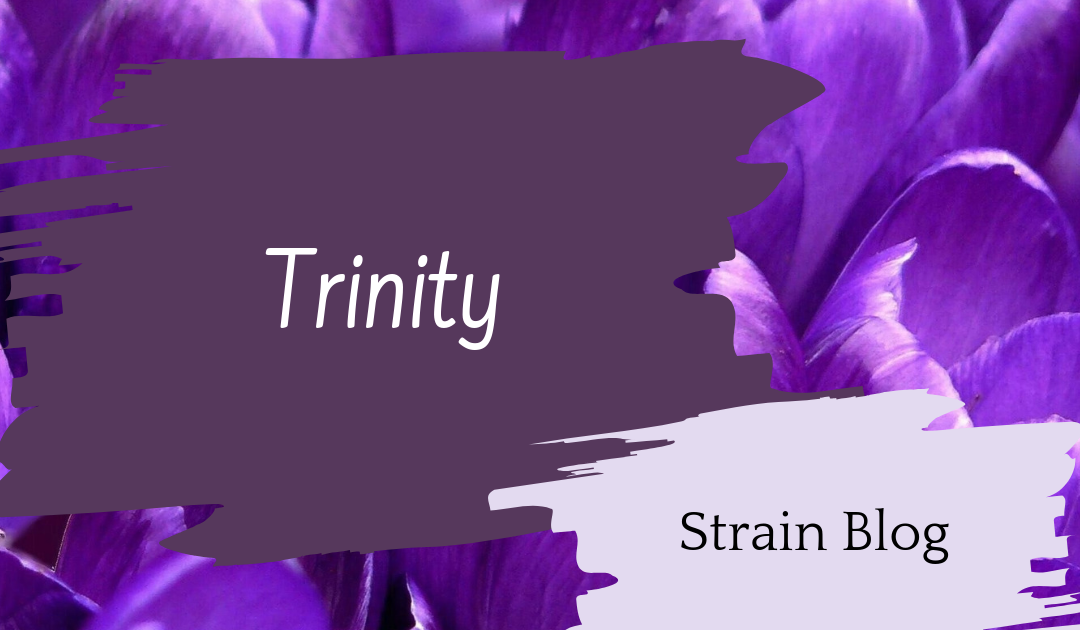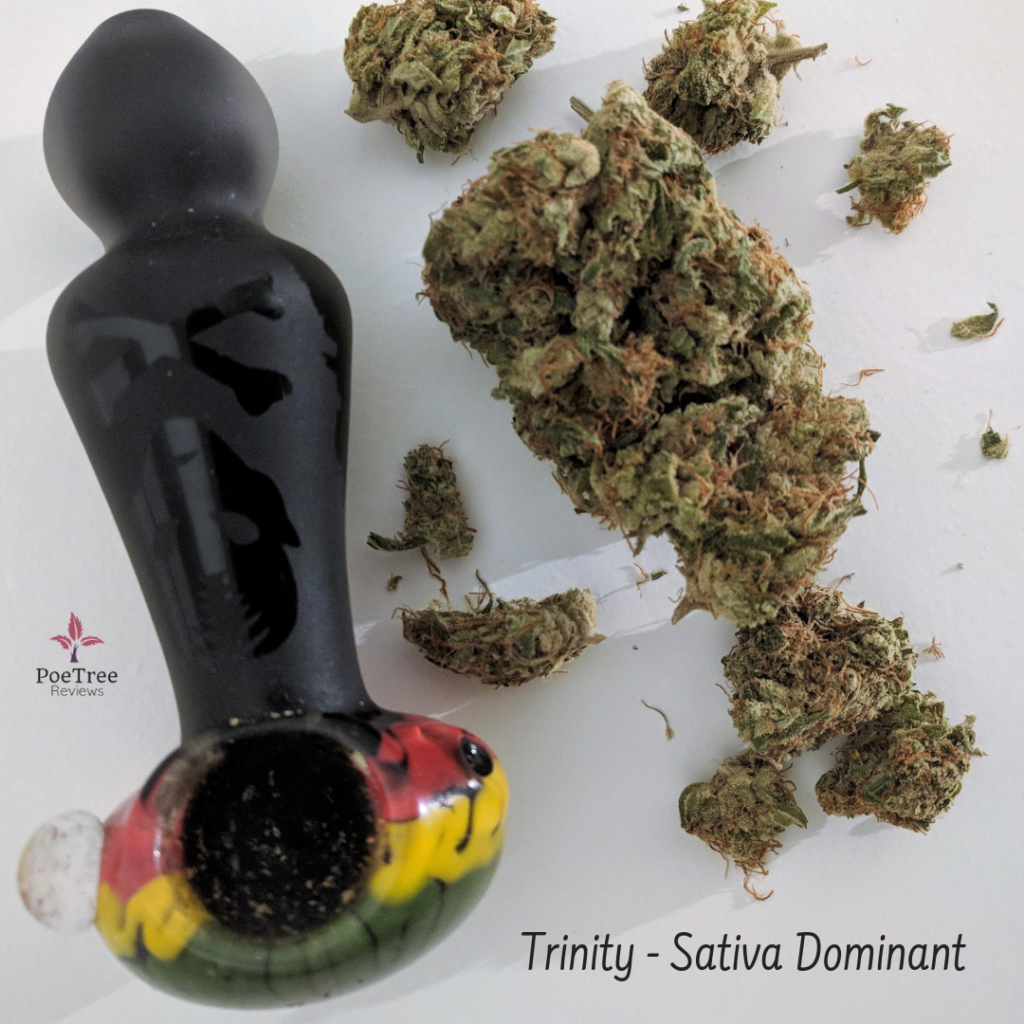I like to know as much as possible about a strain before I actually go into a store or add-to-cart, and so, I always do as much research as I can before I commit to buying pretty much any cannabis. It is quite rare that I purchase any strains with mysterious origins, unless of course, they happen to have a funny name (like Kentucky Durban or Mental Floss). Trinity, however, is a flower with an uninteresting name, as well as a frustratingly unclear backstory, yet somehow, an ounce of this bud ended up in my stash.
I value online reviews greatly, which is one obvious reason why I write them. Essentially, the only reason why I felt confident in picking up such a large quantity of a completely unfamiliar strain, was because of all of the raving reviews that I had found about it beforehand. There seems to be some consensus that Trinity was originally cultivated somewhere in Northern California, although other claims about her genetic makeup are concerningly inconsistent. Many online reviews I had discovered, boasted that Trinity was made up of three absolutely legendary strains, however the parent strains differed drastically every time, depending on the source. Leafly, a most trustworthy site, can trace the roots of the sativa-dominant Trinity back solely to an indigenous North American indica landrace. Some WikiLeaf commenters say that the original seed came from Trinity County CA in 1993, and the strain is now hoarded in Eugene Oregon, where true Trinity cuttings are fiercely hard to get a hold of. Although, despite all of this confusion and mystery, many reviewers reliably quoted Trinity as a must-have strain, and one of best to ever exist. One especially helpful Leafly reviewer depicted Trinity as the reigning strain of the early 90’s, until White Widow knocked her off her throne.
To be a honest, a big reason why I ultimately ended up with this strain, and not something more familiar, is because the sativa that I really wanted to buy an ounce of had sold out before I could check out my cart. I was a little bit crushed, I had been waiting a year for Willie Nelson to end up back on my dispensary menu, but it was gone as fast as it appeared. Trinity was purchased in its place, and she had some big shoes to fill, and some high expectations to meet.
The smell from my container of Trinity is pretty lackluster, giving off whiffs of pine, flowers, and dirt. The exhale of the smoke starts out really mild and sweet, although it can also feel quite harsh, often tickling my nose, causing sneezes when I take bong rips, and nasty coughing when I smoke it in a joint. The effects of the high are very mild and subtle, just like the smell and the taste of the buds. There is a slight increase in energy, inconspicuous feelings of pleasure or happiness, and a very mentally uplifting, characteristic sativa-like high. What I believe makes this strain really special is, that since it lacks very overwhelming effects, Trinity produces a very clear-headed and overall unimpaired and elevated state. One thing that really stands out is that this strain also puts you into a very relaxed mindset as well, and for me, this is a state that seems ideal for fostering creativity and thinking up new ideas. When I use this strain I can really enter a mental flow state, and in the right conditions, come up with a lot of those really enlightening “aha!” revelations. So, although this strain doesn’t exactly sparkle like a gem, she is a total diamond in the rough, and definitely something special.
I totally understand why Trinity was seen as such a treasure in her day. This strain has one of those clear, non-sedating, low potency highs, allowing you to puff on her without restraint for the majority of your morning, and not become weighed down or spaced out. The only downsides for me were the harshness of the smoke, and the fact that the comedown can often trigger pressure headaches for me. I took a huge leap when I first bought these buds, but luckily, my faith in a few good reviews allowed this gamble to pay-out beautifully.


